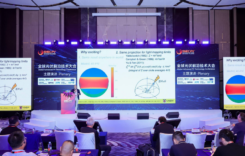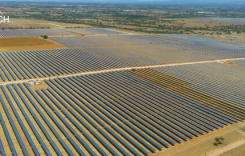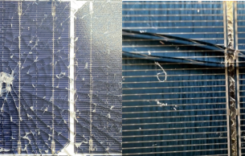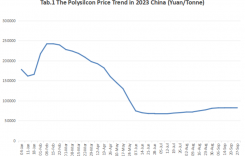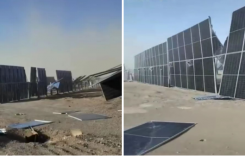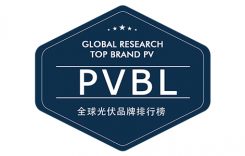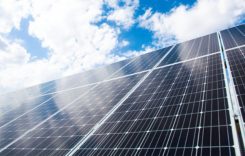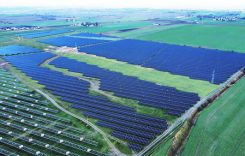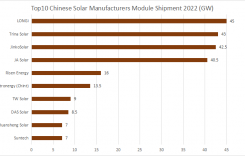PVTIME – Clean energy is one of the most important solutions in the fight against climate change, and solar photovoltaic (PV) power plays a central role. Most regions and governments are encouraging the use of solar systems to replace traditional energy, even in the most fossil fuel-intensive regions of the Middle East.
These policies are critical to the PV manufacturing industry. And a small change in policy can have a significant impact on the industry as a whole.
A new notice from China on the export of PV solar products, which will take effect on 1 December 2024, reduces the export tax rebate rate for some photovoltaic and solar cell products from 13% to 9%, a change that has set off a series of chain reactions like a stone thrown into the surface of a lake.
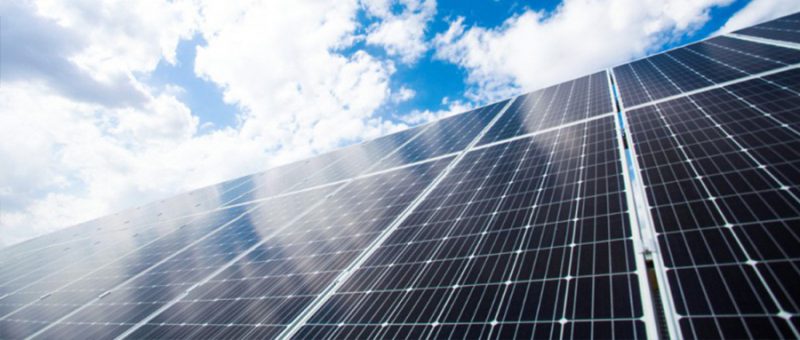
The shipment boom with the race against time!
After the news of the policy adjustment, PV solar companies involved in foreign trade acted quickly with a large number of emergency booking to grab shipments of action among the industry. Time is money, a foreign trade manager of a solar energy and lithium battery was busy booking shipments. The reduction in the export tax rebate rate means that corporate profits will be directly reduced by about 4%, which would have a huge impact on the already thin profits of the foreign trade business.
Most Chinese PV and ES companies had received a large number of export inquiries for related products, especially from the Latin American market, where customers cannot wait to ship as soon as possible. an exporter of energy storage products in Shenzhen City, China, revealed that all of its products are affected by the adjustment. Shipping companies have also been actively coordinating, but supplies are still tight.
Xeneta, the freight rate benchmarking platform, and Norwegian Shipping have issued serious warnings that containerised ocean spot freight rates could rise sharply as a result of Trump’s tariff policy. Historical data shows that in 2018, when Trump imposed tariffs on Chinese imports, this directly led to a spike in ocean container freight rates of more than 70%. Having learnt from the past, US importers and exporters have accelerated the pace of importing goods to avoid the losses caused by the higher tariffs, in order to cope with the possible crazy rise in ocean container freight rates. Data show that the spot container sea freight from the Far East/China to the U.S. East Coast, per 40-foot equivalent unit has risen 150 dollars, while the West Coast freight rates in the past three months has been to the same extent of decline, showing the East and West Coast freight rate trend of the situation of divergence.
Tough choices to cope with rising costs
At the same time, Chinese PV manufacturers have been announcing price increases in quick succession. On 29 October, leading PV module manufacturer LONGi announced that it would raise its product prices by 0.01 to 0.02 yuan per watt, followed by Trina, JinkoSolar, Tongwei, JA Solar and other top module manufacturers raising their PV product prices by 0.01 to 0.03 yuan per watt.
The wave of price increases is no coincidence. Rising raw material prices are a key reason. For Chinese energy storage and battery companies, the rise in lead prices has led to a significant increase in costs. A number of battery price adjustments have been announced by Chinese energy storage companies. And the reduction in the export tax rebate will undoubtedly exacerbate the situation for these companies. To make up for the loss, companies will have to raise prices.
On the other hand, market supply and demand factors are also at play. A slowdown in production will make it possible to stop prices from falling. On 9 December, at the annual conference of the China Photovoltaic Industry Association (CPIA) in Sichuan, China, 33 of the top PV-related companies signed a self-discipline agreement for the healthy development of the PV industry. The 33 PV solar manufacturers in China include LONGi, CSI Solar, Huasun Solar, Risen Energy, Jinko, JA Solar, Trina Solar, Chint (Astronergy), AIKO, Tongwei Solar, GCL, TCL Zhonghuan, Shuangliang, Lihao Semiconductor, DAS Solar, Meike Solar, Daqo, DMEGC, Solargiga, Jietai Solar, Yingfa, QJ Solar, SolarSpace, Xinte, JYT, Unigrace, Ginno, SunSync, Leascend, Huayao PV, Gokin Solar, Sunrev Solar and Honhshi Group have reached a consensus on production control. Although no specific quotas have been announced, some companies have already taken practical measures, according to the participants. In addition, the industry’s self-discipline is expected to be strengthened, and all companies upstream and downstream in the industrial chain are urged to join the agreement. Gao Jifan, chairman of Trina Solar, suggested that PV manufacturers should strictly implement the self-discipline pledge of not selling below cost, and actively explore an effective mechanism to control the industry’s operating rate at a reasonable level through self-discipline.
Production cuts and other measures to reduce the pressure of the market supply and demand imbalance have been eased, component prices have tended to enter an upward channel, which also provides a certain market basis for companies to raise prices.
On 24 December 2025, two leading Chinese silicon producers, Tongwei and Daqo, announced production cuts. Tongwei said that Yongxiang, its polysilicon production subsidiary, would gradually reduce its overall production while planning technical reform and testing. Currently, its production capacity exceeds 900,000MT per year. Tongwei expects the long-term healthy development of the silicon and photovoltaic solar industries. And its move is mainly due to rising electricity prices for its factories and the dry period in the southwest in winter. Meanwhile, Daqo, a leading producer of high-purity polysilicon for the global solar PV industry, announced that it will start technical reform and overhaul work at its production bases in Inner Mongolia and Xinjiang, and reduce production capacity in an orderly and carefully controlled manner. It has an annual production capacity of 305,000 MY of polysilicon, Daqo said.
In this industry storm triggered by policy adjustment, photovoltaic and battery companies are experiencing an unprecedented test, but also in the challenge of finding opportunities for transformation and upgrading, the future direction of the industry is worth continuing to pay attention to.
Continuing the process of globalisation
Production capacity for both photovoltaics and batteries is highly concentrated in Asia, especially in China. Among them, more than 90% of the world’s photovoltaic, more than 70% of lithium batteries are produced in China.
Industry insiders believe that China’s export tax rebates brought about by the price of related products, short-term will trigger overseas customers to increase orders. In the long term will also benefit Chinese companies have been in overseas layout of production capacity.
Profit margins in the battery industry are generally stable. However, the profit margins of different products vary widely. Against the backdrop of the country’s downward revision of the export tax rebate rate, Chinese manufacturing companies need to further adapt to the new environment through technological innovation and cost control.
In recent years, a large number of manufacturing companies have accelerated the pace of globalisation. LONGi, Canadian Solar, Trina, JinkoSolar and other photovoltaic companies have expanded their overseas markets by investing and building factories overseas, establishing production bases in Southeast Asia, the US, the Middle East and other places to reduce the impact of trade barriers and increase market share. The increasing number of overseas orders won by leading PV solar companies has brought related upstream and downstream companies on board.
Trump’s tariff policy sparks panic
Following Trump’s re-election as US President, his tariff policy has sent shockwaves through the trade sector. Trump promised to impose tariffs of up to 20% on all goods imported into the US and additional tariffs of 60-100% on goods from China. This news came like a heavy bomb, making US importers and exporters look like the big enemy.
Since their implementation, these tariffs have cost US businesses and consumers a cumulative total of $221 billion,’ the Information Technology Industry Council said in a statement. Today, the Office of the U.S. Trade Representative is once again using the crude and ineffective tool of tariffs without any evidence of their effectiveness.
The Brookings Institution notes that the tariff increases have already led to the loss of at least nearly 300,000 jobs in the US, and that the additional costs will be passed on to US consumers.
Will Chinese PV be restricted?
In fact, the US has already initiated two countermeasures against Chinese PV in 2012 and 2015. The sanctions include Chinese crystalline silicon cells and modules (regardless of whether they are made with cells from other countries) and modules made in other countries using Chinese crystalline silicon cells. The US has also adopted other trade defence measures to restrict imports of photovoltaic products.
Some industry insiders believe that these moves can be seen to some extent as confirming the dominant position of Chinese PV manufacturing in the world.
It is worth noting that in recent years, the global demand for photovoltaic products is increasing, Chinese PV companies rely on the US market has been far less than 10 years ago. It is reported that in 2023, the Middle East and some countries in Africa and other emerging PV markets also show the potential for high growth.
Industry experts say that the continuous innovation capability of Chinese PV companies and their competitive advantages in all aspects will drive the continuous iteration of Chinese PV technology and cost reduction, and Chinese companies will open up more markets in the future.
In terms of price and quality, for example, First Solar, a leading US PV module manufacturer, shows on its official website that the company produces a new generation of Series7 modules (2.8 square metres) with a conversion efficiency of 19.7% and a price of up to US$0.30-0.33 per watt, while the conversion efficiency of Chinese n-type crystalline silicon PV exceeds 23%, the average price in the US is around US$0.25-0.28 per watt.
Industry experts claim that the US uses tariffs and other trade barriers to protect backward production capacity. The above data shows that First Solar, as a proxy for photovoltaic products, not only has higher prices than Chinese crystalline silicon modules, but its conversion efficiency is also uncompetitive.
How should Chinese PV companies deal with this?
From the current point of view, trade barriers to increase is the trend, either do not do business in the United States, if you want to do business in the United States, Chinese enterprises must have local capacity in the United States. A photovoltaic enterprise practitioners pointed out that in the face of the current international economic and trade environment, Chinese photovoltaic enterprises need to respond flexibly, not only to adhere to technological innovation and international cooperation, but also to consider the establishment of production bases in key markets such as the United States, in order to adapt to the development trend of the global photovoltaic industry. However, Chinese companies to build factories in the United States have to face the challenges and difficulties in the psychological expectations, such as the high cost of building factories, technical standards and certification requirements are more stringent, trade barriers are still severe and complex, cultural differences and talent recruitment difficulties.
China’s photovoltaic industry to achieve long-term stable development, must adopt a proactive response strategy. First, trade response and early warning should be strengthened. The whole industry should establish a comprehensive risk management awareness, risk prevention in the whole process of overseas trade.
Second, the competitiveness of China’s photovoltaic industry should be consolidated and strengthened. Continue to expand the domestic market, solve the institutional barriers in the development of the market, guide PV enterprises to further improve the level of technological innovation, consolidate the PV industry’s technology and cost competitiveness, consolidate the global leading edge.
Again, international trade cooperation should be further deepened. Carry out a variety of forms of cooperation, and actively promote advanced international technology, talent, capital, standards and so on. Continue to expand overseas markets, guide the export of photovoltaic products diversified international layout, strengthen the ability to resist risks.
Further optimise the energy structure of the PV industry, continue to focus on low power price areas mainly with green power guarantee, and carry out green transformation through green power trading and zero carbon industrial parks.

Scan the QR code to follow PVTIME official account on Wechat for latest news on PV+ES



